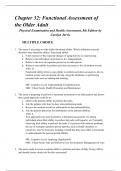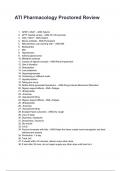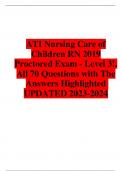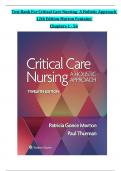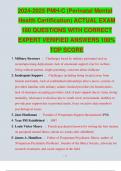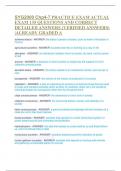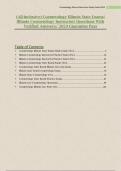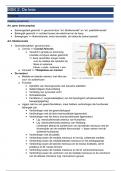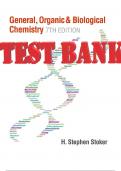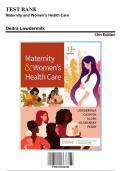Tentamen (uitwerkingen)
Chapter 32: Functional Assessment of the Older Adult Physical Examination and Health Assessment, 8th Edition by Carolyn Jarvis
- Instelling
- Physical Examination And Health Assessment
Physical Examination and Health Assessment, 8th Edition by Carolyn Jarvis MULTIPLE CHOICE 1. The nurse is assessing an older adults functional ability. Which definition correctly describes ones functiona ability? Functional ability: a. Is the measure of the expected changes of aging that ...
[Meer zien]
